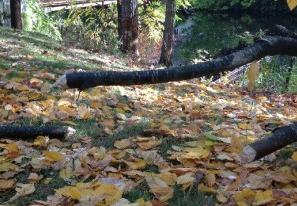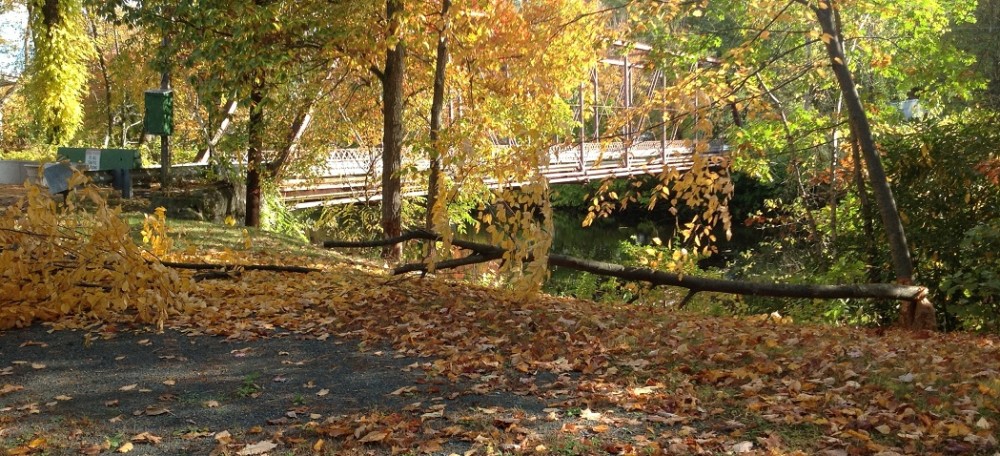For the last couple mornings, with a feeling of complicated sadness, I’ve passed a downed young black birch tree sprawled halfway across the gravel drive to my apartment. It’s a beaver tree: the flakes of evidence lie scattered around the conical incision that took down the trunk as surely as an axe.
It’s an old question: who should win, the tree or the beaver? If nature weren’t so strictly bounded by human activity, we could easily spare a few trees to a few beavers. But it hurts to lose such a graceful spray of yellow leaves, one of the few birches that still held strong on the narrow tree-lined border between the driveway and the Mill River.
 Still, I couldn’t help but admire the animal’s handiwork this morning. After a day or two of the tree just lying there, I came out to discover that the beaver had snipped off each upper limb with surgical precision. In the next few days, I expect, he’ll haul them into the pool above the concrete dam, where they’ll lie underwater, and eventually under ice, for him to feed on over the course of the winter.
Still, I couldn’t help but admire the animal’s handiwork this morning. After a day or two of the tree just lying there, I came out to discover that the beaver had snipped off each upper limb with surgical precision. In the next few days, I expect, he’ll haul them into the pool above the concrete dam, where they’ll lie underwater, and eventually under ice, for him to feed on over the course of the winter.
I feel a kinship with that beaver, after all, destructive as he is. The other morning, in the darkness just before dawn, I went out to the stone wall above the dam to find him below me, snuffling at the driftwood. Thrusting his blunt dark head with its whiskers and tiny round ears out over the water, he looked somehow puzzled to find this manmade structure where his own dam of twigs and trunks ought to lie. I don’t know how long the powers that be will let him continue on alive and damaging. But for now I still like to think of him, shuffling about in the darkness, living his secret, powerful watery life.
